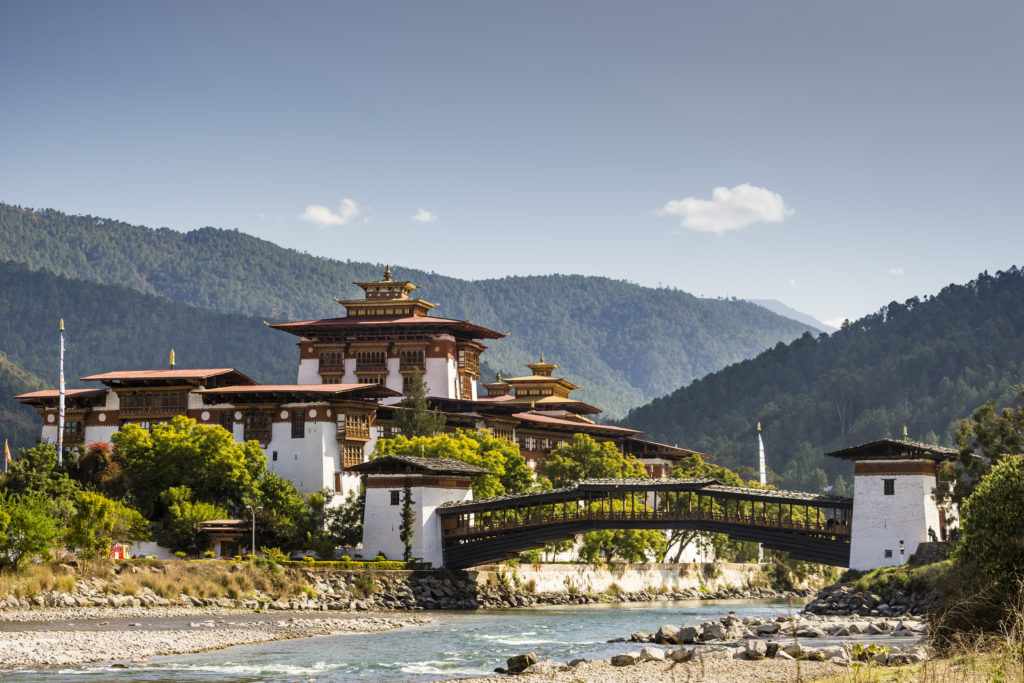
The small Himalayan Kingdom of Bhutan offers some major attractions. Read this post for our Top 5 Places to Visit in Bhutan.
Top 5 Places to Visit in Bhutan: The small Himalayan Kingdom of Bhutan offers some major attractions. Read this post for our Top 5 Places to Visit in Bhutan.
Contact us for FREE Bhutan travel planning
We are the experts in Bhutan travel! We have many decades of experience traveling, photographing and trekking in Bhutan. Use us for free Bhutan tour planning, including what agencies to use, what travel routes to take, when to go and more! Contact Us.
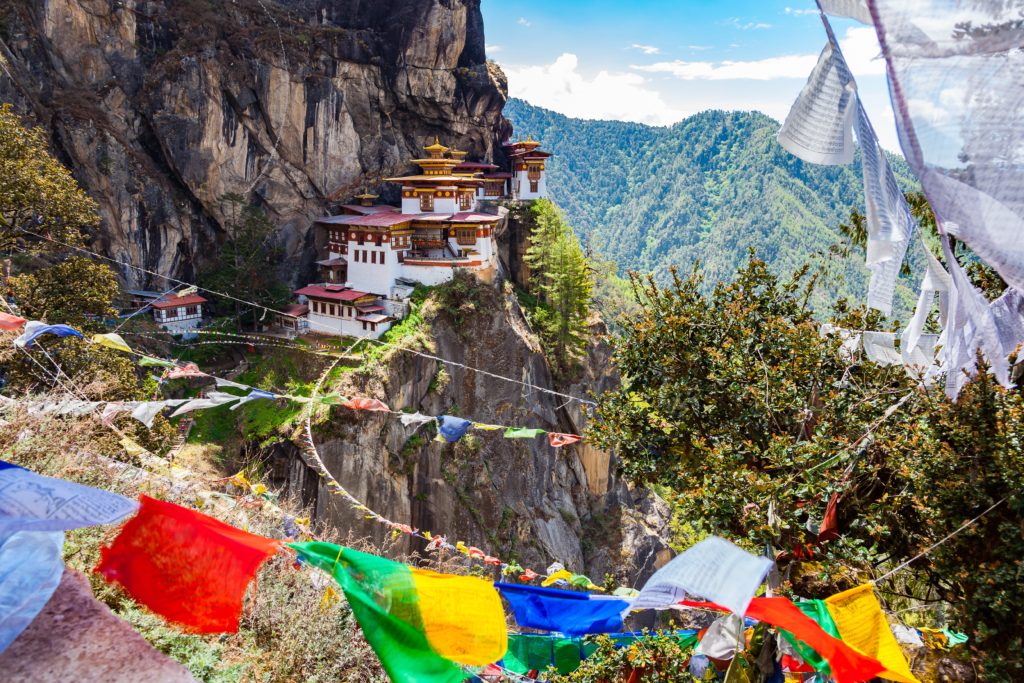
Best Places to Visit in Bhutan
Tucked away towards the eastern Himalayas in South Asia, Bhutan is a kingdom. The region features all sorts of dynamic landscapes and locations, like fortresses and remote Buddhist monasteries. There’s much to see all over the country. You will love Bhutan if you have an interest in ancient relics, historic sites traditional culture and great hospitality.
Bhutan’s reputation has boosted as a popular tourist destination because of its interesting scenery and captivating history. Now that tourists are asking for a different experience from what the urban metropolis provides, they’re looking towards the mountain ranges and integral locations. These areas offer an encounter with nature, culture, and history. The experience is completely different from their urban lifestyle.
From sightseeing to trekking, photography tours to cultural experiences, there’s a lot to do in Bhutan. That’s why we’ve shortlisted the Top 5 Places to Visit in Bhutan.
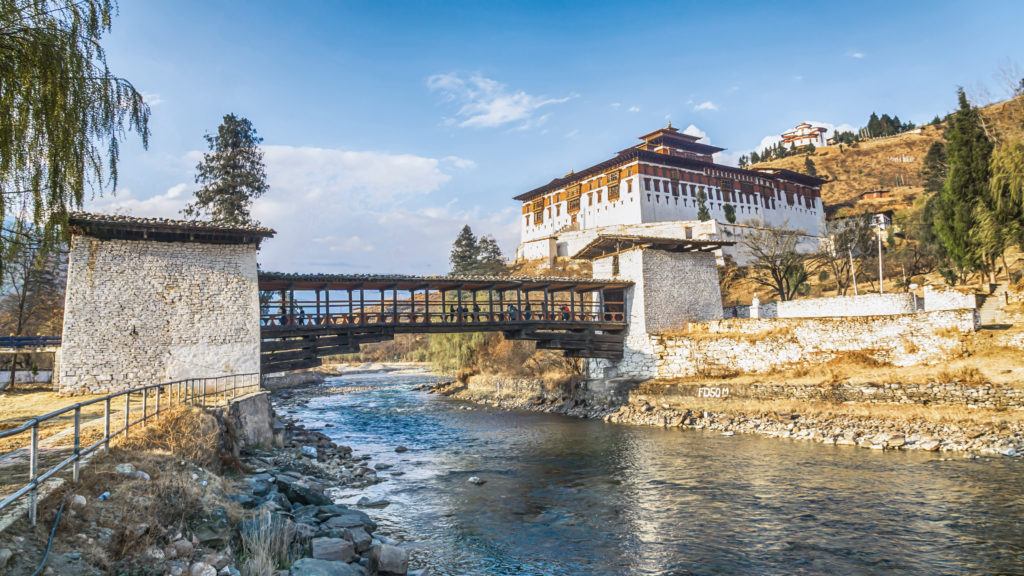
Rinpung Dzong is located in the town of Paro
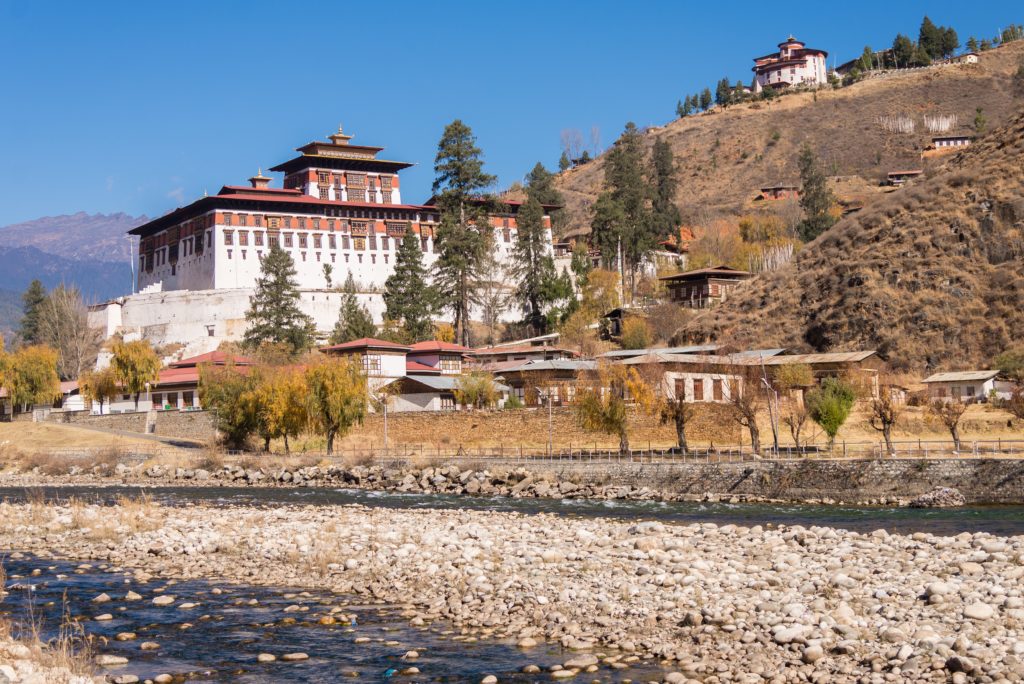
Rinpung Dzong
Rinpung Dzong
Located in Paro, the Rinpung Dzong is a fortress and Buddhist monastery commonly referred to as Paro Dzong. Drung Drung Gyal, who belonged to the Drukpa branch of the Kagyu School of Buddhism, founded it in the 15th Century. Two centuries later, the Zhabdrung of the period demolished Hungrel Dzong. They built a new structure from the ground up, naming it Rinpung Dzong.
A Dzong is a type of fortress found in Bhutan and Tibet. Dzongs are usually massive structures with towering outside walls that surround many inside courtyards, offices, temples and monks quarters. Dzongs in Bhutan serve as administrative centers for each district of the country. So dzongs act as the district capital building along with district monastic headquarters. Dzongs in Bhutan are all elaborately built.
The expansive Rinpung Dzong comprises fourteen chapels and shrines. Just outside the platform of the main Dzong, you will find the Deyangkha Temple. Below the massive structure of the Rinpung Dzong, you’ll find a cantilever bridge over the Paro River.
If you’re lucky or scheduled your trip with festivals in mind, you can catch a glimpse of Tsechu. Tsechu is one of Bhutan’s greatest annual festivals. The event takes place in the second month of the Bhutanese Lunar Calendar from the eleventh day to the fifteenth day. Hence, you have to plan a trip around March or April. You can see beautiful masked dances depicting stories, and a procession of holy images as well. Rinpung Dzong is easily one of the best places to visit in Bhutan.
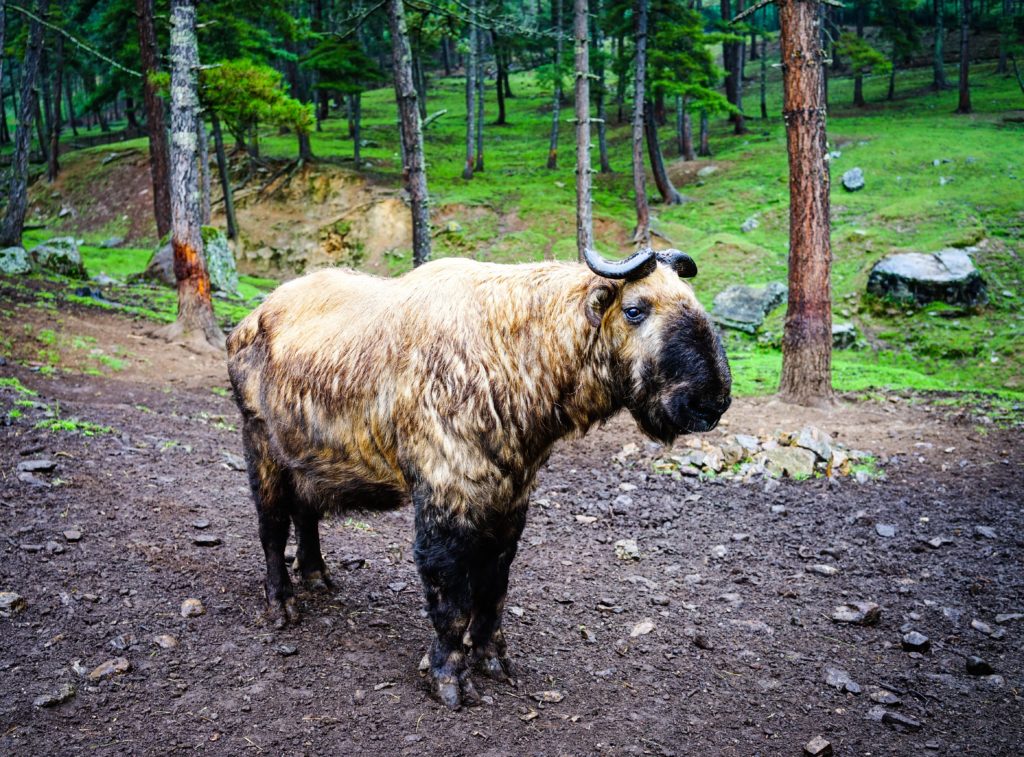
Motithang Takin Preserve
To intrigue the nature enthusiast and wanderer, Bhutan has the Motithang Takin Preserve based in Thimphu. This is far from the usual cultural encounters you will have at monasteries and dzongs. However, the Motithang Takin Preserve aligns with the country’s mission of conservation and sustainability.
The takin is Bhutan’s national animal. What? You don’t know what a takin is? Well, don’t feel too bad as many people have not heard of the takin. A Takin is similar to a goat and an antelope and lives primarily in the eastern Himalayas of Tibet and Bhutan. They live in higher altitude areas between 1000m and 4500m above sea level. They stand between 100 and 140 cm high (39 to 55 inches) and weigh between 250 kg and 350 kg (550 lbs to 770 lbs).
The Motithang Takin Preserve was initially a small zoo. Later, they converted it into a preserve, when the animals stayed in the area instead of going into the forests that surrounded the zoo. Bhutan declared the takin as its national animal because of the belief in a legend that Lama Drukpa Kunley created the animal.
The preserve is inside a pine forest that offers an excellent opportunity to go trekking before you get to see the animals. Since the zoo disbanded a long time ago, you’ll only see more takin here as they have a nature of being very tame, which is why they had to be put back into captivity. You can see goats, Himalayan monals and species like sambal deer and barking deer there as well. The Takin reserve is a great place to take your kids to!
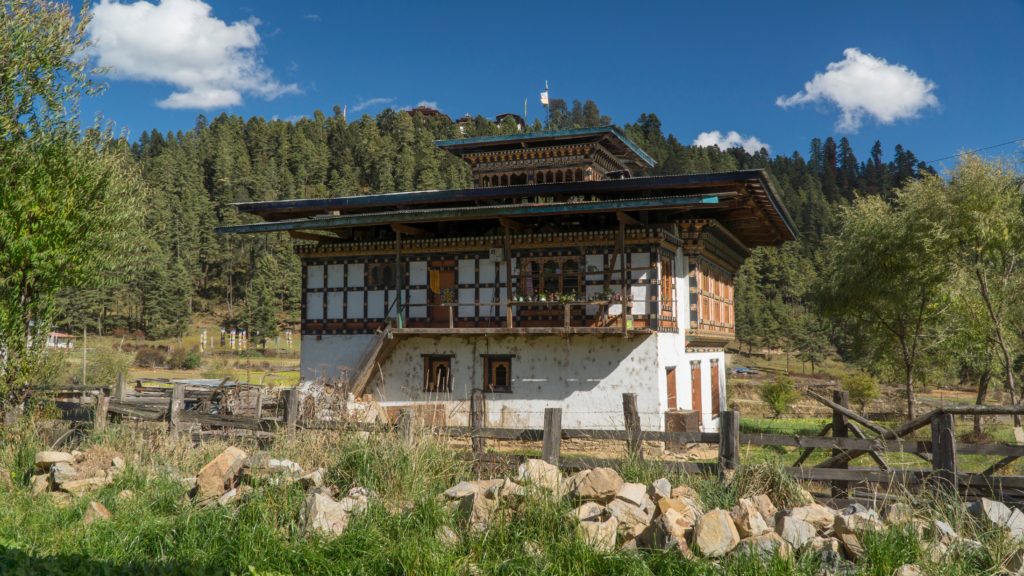
Bhutanese home along the way to Pobjikha Valley
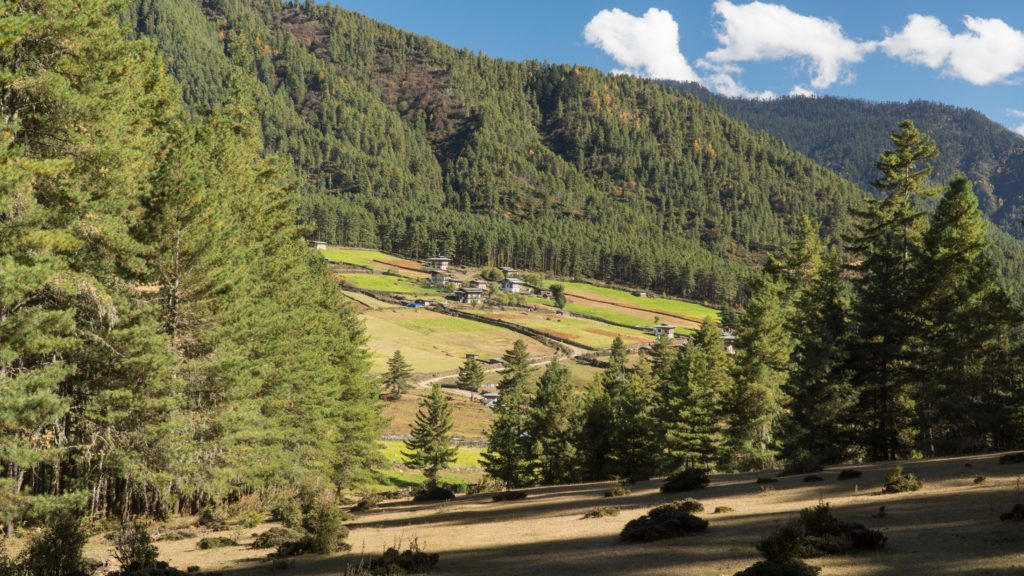
The view along the Gangte Nature Trail in Pobjikha
Phobjikha Valley
This glacial valley in Phobjikha, elevation 2900m/9500 feet, is also referred to as the Gangtey Valley, which takes its name from the Nyingma Sect’s Gangtey monastery. Pobjikha is located along the western slopes of the Black Mountains, adjacent to the Jigme Singye Wangchuk National Park. Pobjikha Valley is home to around 5000 people and is about 140 kilometers east of Thimphu, the capital city of Bhutan.
Winter is unique time to visit the valley because you’ll get to see the black-necked cranes that come to the valley from Tibet to roost during the season.The majestic birds have a mysterious nature because of the way they have a habit of circling Gangtey Monastery in the final week of October, when they arrive, and when they return to Tibet. Aside from black-necked cranes, the valley hosts thirteen other species that have a status of being globally threatened.
The festival of Tsechu takes place here as well, so you’ll be able to see the brightly colored masks as they dance through the festival. From the Gangtey Monastery, you can walk across the valley and get to enjoy a stunning view for miles around. The peaceful atmosphere will calm your nerves, and the feeling of nature around you will energize your senses.
There are numerous hiking trails throughout the Pobjikha Valley that go through villages, forests and alpine meadows. The Gangtey Nature Trail is the most popular hike and takes about 90 minutes to complete. It begins near the Gangtey Monastery and descends towards Semchubara Village and ends near the primary school on the other side of a metal bridge. Don’t worry…your guide will know the way! A longer and slightly more strenuous hike is the Sashi La Nature Trail, which takes about a half day to complete. This hike goes thru rhododendron forests, to the village of Ramgokha, past Buddhist stupas and thru an old growth forest. Again, your guide will know the way
Most people only stay 1 night in the Pobjikha Valley, but if your schedule allows it I strongly recommend staying 2 nights. With 2 nights, you can spend a full day hiking the many trails in the areas, spend more time at Gantey Monastery, meet with locals in the valley and have a more relaxed experience. There are several nice hotels in the valley, including the Dewachen Hotel, which offers a fantastic view of the valley.
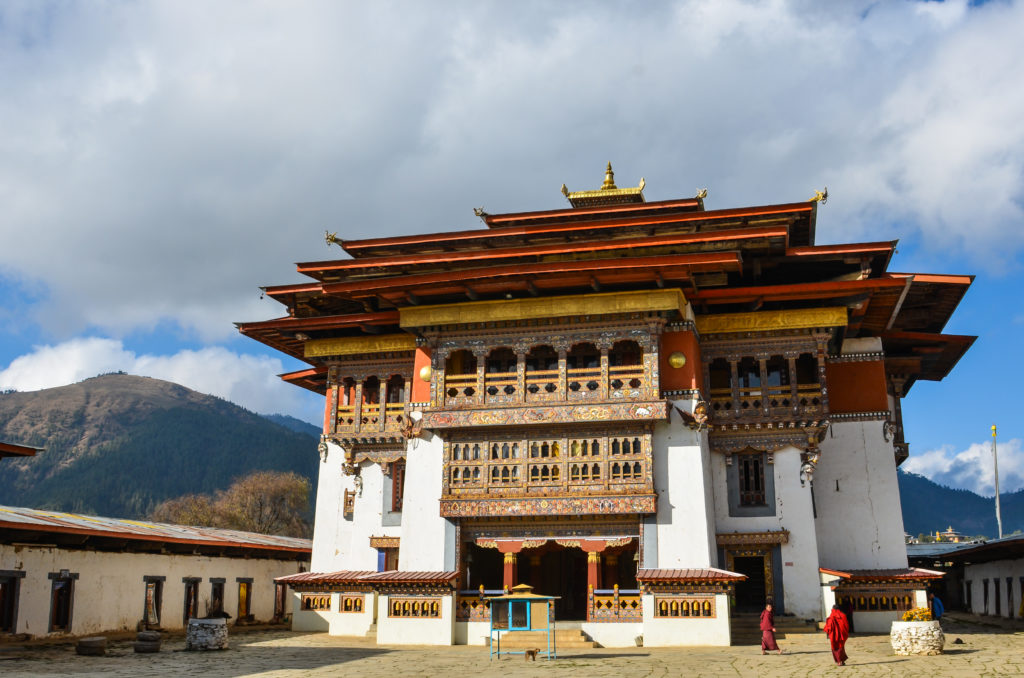
Gangte Monastery in the Pobjikha Valley
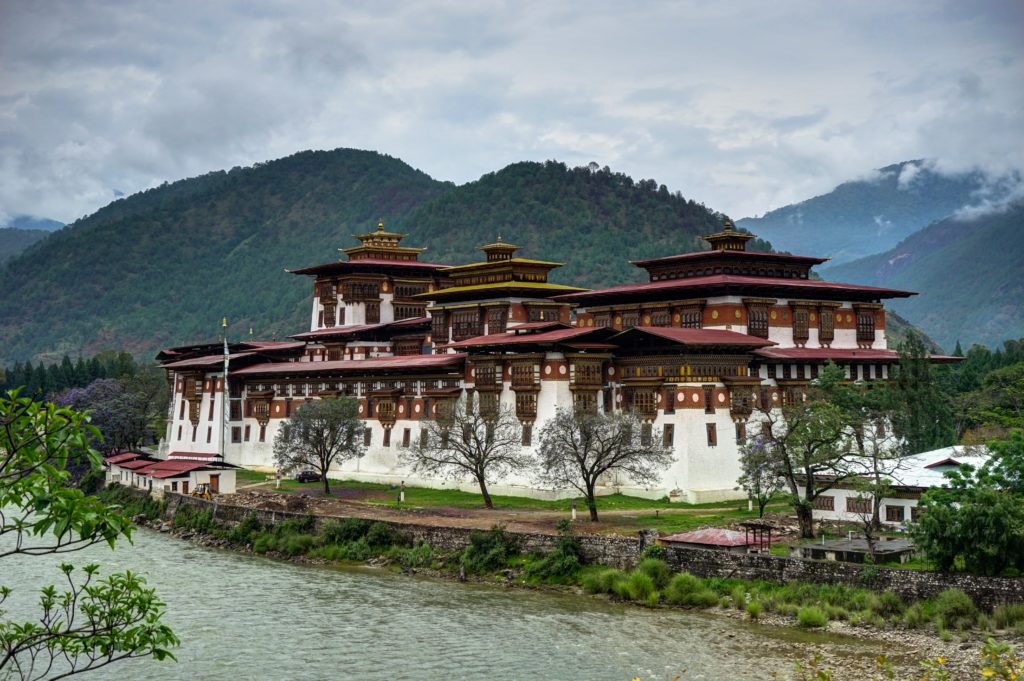
Punakha Dzong is the second largest dzong in Bhutan. It is regarded as the most beautiful of all the dzongs in Bhutan.
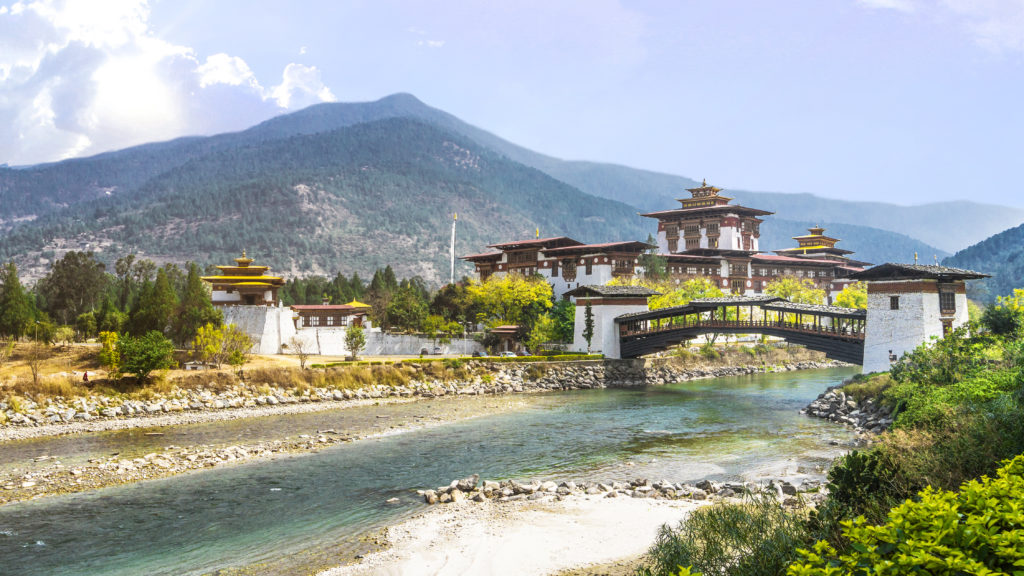
Punakha is regarded as Bhutan’s most beautiful dzong
Punakha Dzong
The second largest dzong in Bhutan, Punakha Dzong, is famous for its distinctive architecture and design, which is why it is regarded as the most beautiful dzong in the country. Based near the confluence of the Mo Chhu (Mother River) and Pho Chhu (Father River), the picturesque dzong looks like something out of a fairytale. This is partially true since the crowning ceremony for Bhutan’s kings took place at this fortress.
Aside from being the second biggest, it’s also the second oldest Dzong in the country. Until 1955, Punakha Dzong was the seat of the Kingdom of Bhutan. Since then, the capital has been moved westward to Thimphu. It is a well-known tourist site so you can easily access it via a three-hour drive east of Thimphu. After crossing the mountain pass, the spectacular sight of Punakha Dzong will enchant you at first glance. Punakha Dzong lies at an altitude of 1200 meters (3940 feet) and has a milder climate than Paro and Thimphu.
The Dzong itself was built between Pho Chu and Mo Chu, the two rivers with differently colored waters from each other. Spring is tan excellent time to visit as you can see the pretty jacaranda trees blossom in contrast with the white walls of the Punakha Dzong. It is easy to see why Punakha is listed as one of the Top 5 Places to Visit in Bhutan.
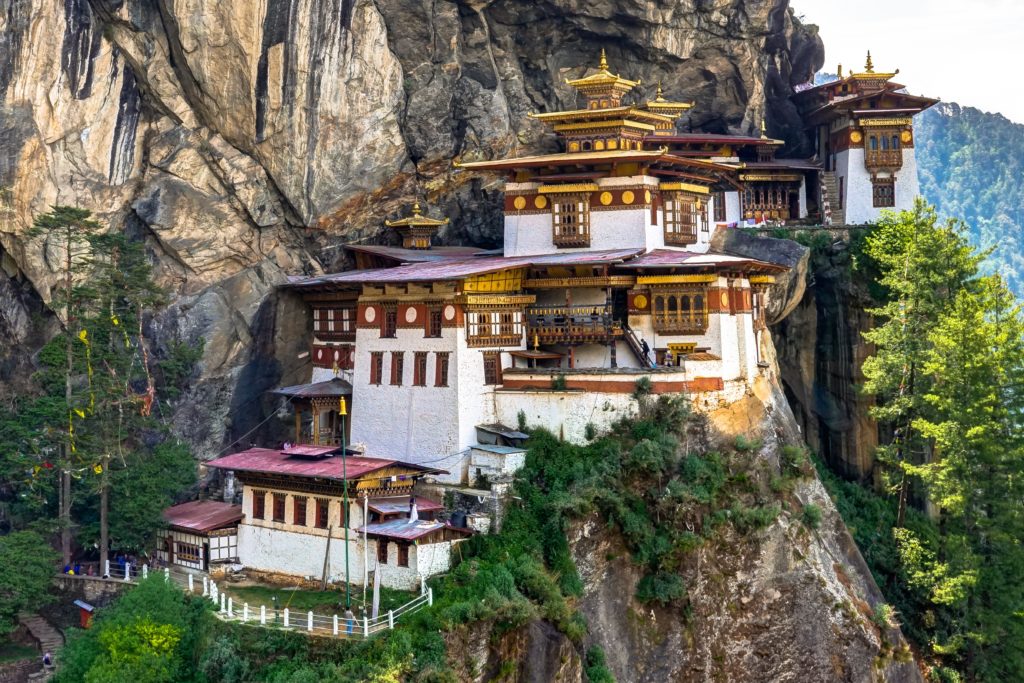
Tiger’s Nest is easily the most recognizable site in Bhutan
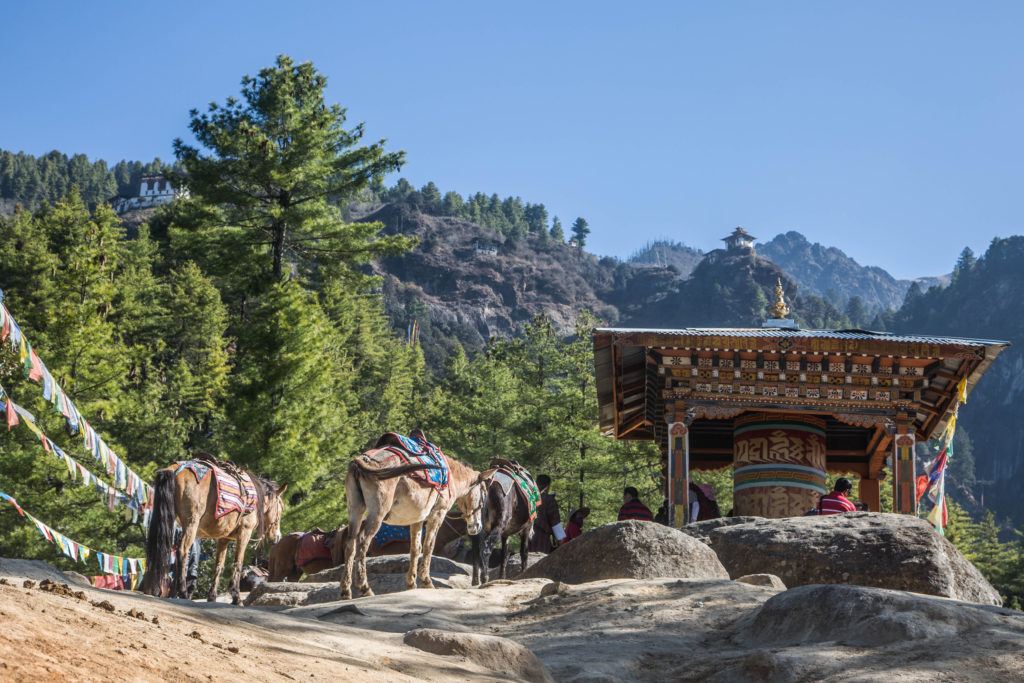
Along the hike up to Tiger’s Nest
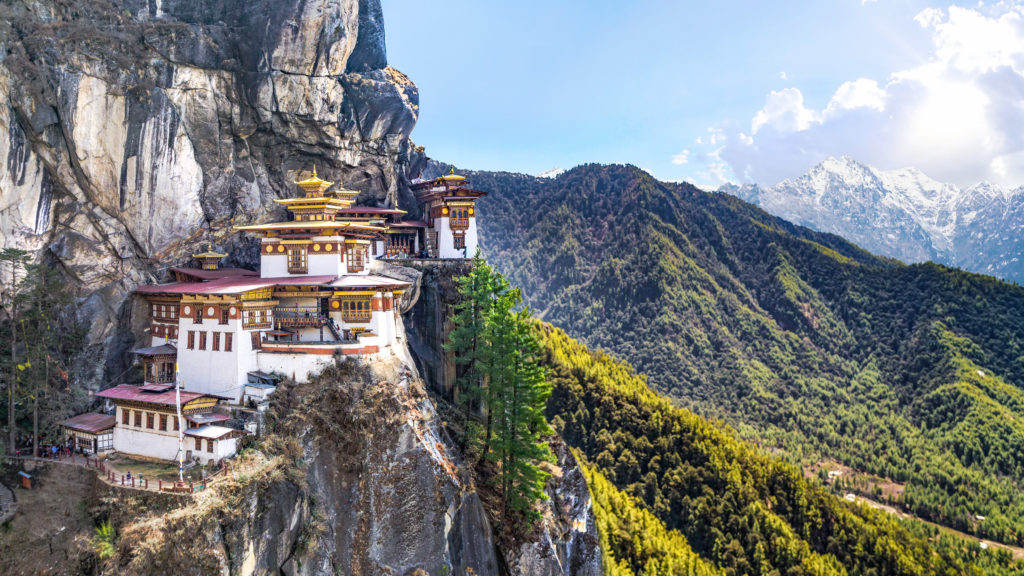
Tiger’s Nest is perched on the side of a mountain
Tiger’s Nest Monastery
The Taktsang Palphug Monastery is commonly known as the Tiger’s Nest Monastery. It is one of the most sacred sites for Tibetan Buddhism and is one of the most widely recognized sites in the greater Himalaya region, along with Lhasa’s Potala Palace. Not only is it one of the Top 5 places to visit in Bhutan, it is at the top of the list for most travelers. Tiger’s Nest Monastery lies along the side of a cliff nearly 900 meters above the Paro valley. Tiger’s Nest can only be reached by hike as there is no road that leads to the top.
In 1692, the temple complex at Taktsang was built near the Taktsang Senge Samdup cave, the meditation place of Guru Padmasambhava. It is said that Padmasambhava, who is credited with bringing Buddhism to Bhutan, meditated here for 3 years, 3 months, 3 weeks, 3 days and 3 hours back in the 8th century. The hike up to Tiger’s Nest is not overly difficult and can be easily completed by anyone in decent physical shape. For most people the hike will take between 1.5 and 2 hours to complete. You can take horses for part of the hike, but not all the way to the top. The trail up to the monastery is well-defined and has great views along the way. There is a restaurant about halfway up where you can stop for tea on the way up and have lunch at on the way down.
From Tiger’s Nest Monastery, you get a bird’s eye view of the entire Paro valley and all its breathtaking scenery. The atmosphere has the sense of being holy, but it’s also serene and peaceful. This certainly will be a major highlight of any journey to Bhutan.
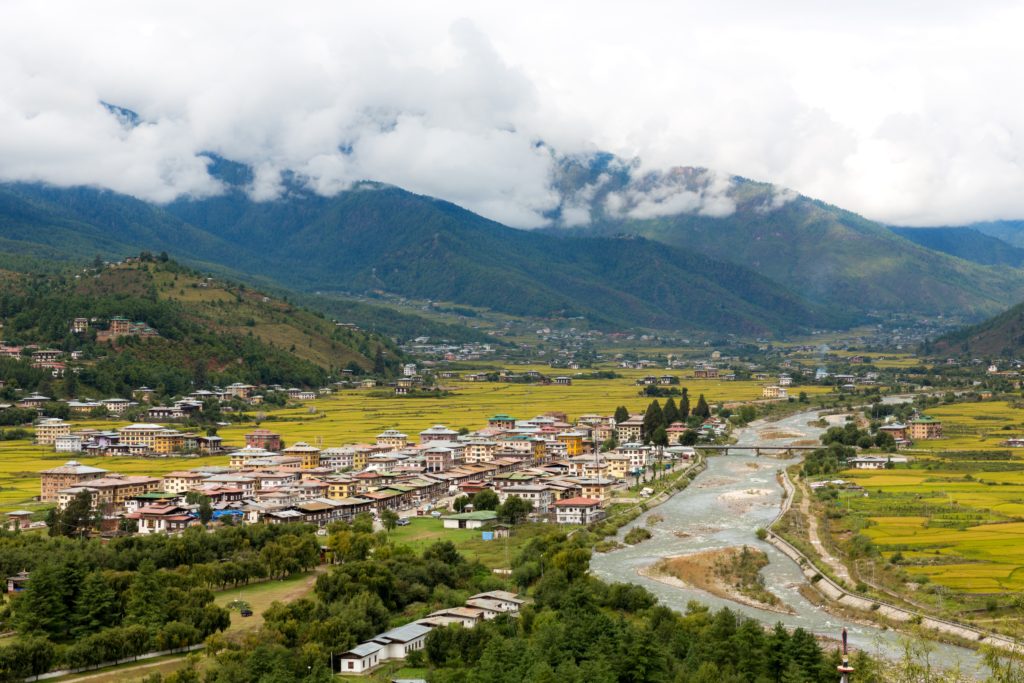
Summary of the Top 5 Places to Visit in Bhutan
Our list of Top 5 Places to Visit in Bhutan is just our opinion for the best places to visit. There are many more places that are amazing to see and experience in Bhutan. Most of the places listed above are located in Western Bhutan and can be visited as part of an 8 day journey (click link for details).
All foreign travelers going to Bhutan must be part of an organized journey that can only be arranged by a travel company. You must have a private vehicle, a driver and a tour guide each and every day you are in Bhutan. No independent travel is permitted.
For more info on the Top 5 Places to Visit in Bhutan, including Tigers Nest Monastery, or to arrange a journey to Bhutan, send us an email via info@thelandofsnows.com.
